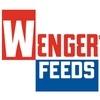Explore all the information on
Poultry nutrition - Other additives
Alternative feed additives have promising importance in broiler production due to the ban on the use of certain antibiotics. The most used antibiotic alternatives in broiler production are phytogenics, organic acids, prebiotics, probiotics, enzymes, and their derivatives. Antibiotic alternatives have been reported to increase feed intake, stimulate digestion, improve feed efficiency, increase growth performance, and reduce the incidence of diseases by modulating the intestinal microbiota and immune system, inhibiting pathogens, and improving intestinal integrity. Simply, the gut microbiota is the target to raise the health benefits and growth-promoting effects of feed additives on broilers. Therefore, naturally available feed additives are promising antibiotic alternatives for broilers.
A study was conducted to determine the effects of crude protein (CP) reduction with amino acid (AA) balanced diets on growth, carcass yields, litter characteristics, and ecological footprint of feeds in mixed-sex broilers. A total of 2,688 Cobb MV × 500 FF broilers were allotted to 4 treatments (14 replicates of 48 birds per pen) from 11 to 36 d of age reared in an open-sided barn. Dietary treatments included: 1) Control diet (C) with DL-Met+L-Lys+L-Thr, 2) C+L-Val 3) C+L-Val+L-Ile and...
Comments : 0
Recommendations: 4
INTRODUCTION Hemp ( Cannabis sativa L.) is an annual herbaceous plant belonging to the family Cannabinaceae (Turner et al., 1979), traditionally grown for fiber and seed production. Whole hemp seed contains approximately 25% crude protein, 33 to 35% oil, and 34% carbohydrate, in addition to a broad range of vitamins and minerals (Darshan and Rudolph, 2000; Callaway, 2004; House et al., 2010). Hemp seed oil contains 75 to 80% polyunsaturated fatty acids (PUFA),...
Comments : 0
Recommendations: 0


New nutritional solution in heat stress management. <i>Ganoderma lucidum</i>: An ally to fight heat stress
Suggested link
INTRODUCTION Campylobacter spp. is well recognized as the leading cause of bacterial foodborne diarrheal disease and poses a serious economical and health risk globally (Skanseng et al., 2010; Silva et al., 2011; Meunier et al., 2015). The most common route of campylobacteriosis infection in humans is the handling or consumption of contaminated poultry meat (Lee and Newell, 2006). Campylobacter spp. is a commensal organism found in cattle, sheep, swine, wildlife, and domestic...
Comments : 0
Recommendations: 0
'We have been able to save up to €800 per building with Alterion®, which is quite an achievement.' Adelaïde Bretaudeau – Broiler Farmer. A recent field trial was performed on three farms that belong to Groupe Michel, a French poultry production organization. The test was repeated over 4 consecutive cycles, on nearly 700,000 broilers, and showed that Alterion® performed consistently under commercial conditions, improving the gut health, technical and economic performance, and welfare of...
Comments : 1
Recommendations: 3
.jpg&w=3840&q=75)

Mycotoxin detection: VICAM builds a stronger and more sustainable future for food
Suggested link
The aim of this study was to evaluate the effect of a yeast extract supplemented in feed and a vitamins-aminoacids compound in the drinking water on the performance and microbiology count of broiler chickens. A 42- day experiment was carried out and replicated twice in time at Universidad ISA. In each experiment, 240 straight run day-old chicks were randomly distributed in 4 treatments of a Completely Randomized Design with a factorial arrangement. The 4 treatments were from the combination...
Comments : 0
Recommendations: 1
The avian respiratory system has a unique structure that provides the birds the most efficient respiration among all terrestrial vertebrates. It is essential to allow flight, a highly energetic activity that requires a fast metabolism together with a remarkably effective oxygen supply. The...
Comments : 1
Recommendations: 2
Introduction Soybean [Glycine max (L.) Merr.] meal (SBM) is typically the main protein feedstuff included in livestock diets (Félix et al., 2010; Oliveira et al., 2020). After being subjected to an adequate heat treatment, SBM has a high crude protein content, as well as a high digestible energy and low fiber contents (Félix et al., 2010). In general, SBM makes up 30% of broiler diets (Duarte & Junqueira, 2013). However, broiler performance is strongly...
Comments : 0
Recommendations: 0
Feed contributes about 70% of total expenses required for the modern poultry enterprises in general. As the days go by, the issue is becoming a cause of concern and it becomes almost mandatory to rethink on the feeding strategies to make the enterprises profitable & sustainable as well. Since the major reason for the concern is the rise in prices of various feedstuffs thus as a consequence practice to utilize comparatively cheaper and unconventional feed ingredients becomes time...
Comments : 4
Recommendations: 3
DESCRIPTION OF PROBLEM There are growing concerns that the continual feeding of inorganic P is leading to the development of eutrophication of surface waters. Excessive P runoff from soil causes an accumulation of P in water sources, and this can result in toxic algal blooms and fish kills [1]. The availability of P from feedstuffs of plant origin is low for poultry because a greater proportion of the total P is present in the phytate form, a form that has low availability...
Comments : 0
Recommendations: 0
In hot environments, animals are prone to change their feeding patterns: the processes of digestion and nutrient absorption produce metabolic heat and, to control body temperature, animals limit feed consumption....
Comments : 3
Recommendations: 0
.jpg&w=3840&q=75)

Candidate Genes Associated with Survival Following Highly Pathogenic Avian Influenza Infection in Chickens
Suggested link
I. INTRODUCTION Kappaphycus alvarezii (KPA) is a red alga that is also called Eucheuma cottonii . Seaweeds have received significant attention for their potential as sources of natural antioxidants attributed to the carotenoids, tocopherols and polyphenols present which contribute to inhibition or suppression of free radical generation (Athukorala et al. 2006). Kappaphycus alvarezii is rich in enzymes, nutrients, minerals, calcium, iron, fibres...
Comments : 0
Recommendations: 0
1. Introduction Fatty acids, especially essential fatty acids, are gaining importance in poultry feeding systems not only for improving the health and productivity of birds, but also because of our health-conscious society that prefers properly balanced diets to minimize adverse health issues [1–3]. Among various fatty acids, omega-6 (ω-6) and omega-3 (ω-3) fatty acids are proving indispensable in a properly maintained ratio for numerous biological [4,5],...
Comments : 0
Recommendations: 0
Introduction Broilers are chickens produced specifically for meat production, these includes small fryers to large roaster type chicken. Broiler production has grown dramatically in the past two decades; these improvements are largely due to numerous researches and breeding programs which further enhanced feed utilization, growth rate and low levels of activity. Current commercial hybrids with high performance require high...
Comments : 5
Recommendations: 0
Martin Smith, Technical Service Director Middle East Africa at Evonik Animal Nutrition, introduces Evonik’s solution GuanAMINO®, which supplies creatine in the best way to your animals, improving their performance leading to optimized production costs and profitability.
...
Comments : 4
Recommendations: 9
Introduction Nowadays, food is eaten to satisfy hunger, to provide the necessary nutrients to us humans and also to prevent nutrition-related illnesses in order to improve physical and mental well-being (SIRÓ et al., 2008). However, human nutrition has been characterized by excessive intake of sodium, cholesterol, omega-6 fatty acids and calories, and by low intake of omega-3 fatty acids, fibers, vitamins, antioxidants and trace minerals. These dietary and nutritional...
Comments : 0
Recommendations: 1
The dietary fibre content of poultry diets is frequently neglected during feed formulation, despite the prevalence of fibrous material in feed ingredients and notable impacts of fibre on the gastrointestinal tract environment. The extent of the influence of dietary fibre is dictated by the specific fibre fraction, i.e. primarily its solubility in gastrointestinal environmental conditions, as well as by the age and health status of the bird. Measuring soluble and insoluble non-starch...
Comments : 0
Recommendations: 0
CURRENT FEEDING PRACTICES INCLUDING VEGETARIAN DIETS ARE MISSING CREATINE The poultry industry is feeding less animal protein to broilers and turkeys today compared to just a decade ago. The use of animal protein was banned in livestock feeds in the year 2000 in Europe due to concerns over public health. The complete ban was lifted, but animal protein use remains low. Animal protein products, especially fishmeal, add another risk factor as they have been associated with a...
Comments : 8
Recommendations: 5
Antibiotic resistance overview
Global meat production increased by almost 20% in the last decade, where the pork and poultry industries showed the highest level of expansion. Rapid urbanization and increasing incomes have had a strongly positive effect on animal protein consumption. Improvements in feed technology and animal production systems have contributed to the shift from extensive to intensive farming operations. However, high-density animal production...
Comments : 3
Recommendations: 7


New nutritional solution in heat stress management. <i>Ganoderma lucidum</i>: An ally to fight heat stress
Suggested link
Anybody can discuss litter toxicity in broiler birds? I am observing the problem in broiler birds with gizzard lesions.. ...
Comments : 0
Recommendations: 0
1. Introduction In recent years, a considerable attention to essential oils (EO) as nutraceuticals in livestock production has occurred, mainly as an alternative to antibiotic growth promoters (AGPs) worldwide. Essential oils are derived from various plants as secondary metabolites with well-documented antibacterial [1], antiviral [2], antifungal [3], antioxidant [4], digestive stimulants [5], and immunomodulatory properties [6]. Some EO are used in a combination with other...
Comments : 0
Recommendations: 1
































